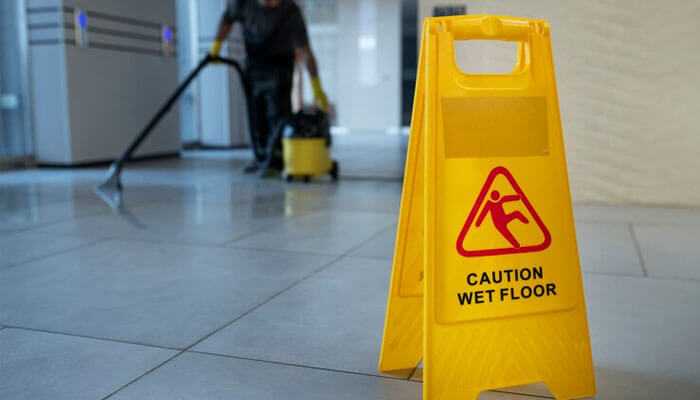Slip and fall hazards are a significant concern for both individuals and businesses, contributing to countless injuries and legal claims each year. These incidents can result in severe consequences, from personal pain and suffering to financial losses and legal battles. Fortunately, innovative startups are stepping up to address these challenges with advanced materials designed to prevent such accidents. This blog explores how these startups are turning concepts into reality by developing cutting-edge solutions to tackle slip and fall hazards effectively.
Understanding the scope of the problem and the solutions provided by startups is crucial for anyone involved in maintaining safe environments. By examining the role of these innovative companies and their advanced materials, we can gain insight into how technology is transforming slip and fall hazards and enhancing safety standards across various settings.
The Problem of Slip and Fall Accidents
As per one law firm, slip and fall accidents are among the leading causes of injury in both residential and commercial settings. According to the National Floor Safety Institute, these incidents account for over one million emergency room visits annually in the United States alone. Common causes include wet or greasy floors, uneven surfaces, poor lighting, and inadequate maintenance.
These accidents not only result in significant physical harm but also pose substantial financial and legal risks. Businesses may face costly lawsuits and increased insurance premiums, while individuals endure medical expenses, lost wages, and reduced quality of life. Addressing these hazards effectively is critical for minimizing both human and financial costs.
The Role of Startups in Addressing Safety Challenges
Startups have become pivotal in addressing niche safety challenges, leveraging their agility and innovative thinking to develop solutions for slip and fall prevention. Unlike larger, established companies, startups can quickly adapt to emerging needs and experiment with novel ideas. This flexibility enables them to bring fresh perspectives and technologies to the market.
For example, several startups are focusing on developing materials that improve traction and reduce slip and fall hazards. These companies are not only introducing new products but also refining existing technologies to enhance their effectiveness. By doing so, they are providing valuable contributions to safety and helping to create safer environments for individuals and businesses alike.
Advanced Materials for Slip and Fall Prevention
One of the most exciting aspects of these startups is their work with advanced materials designed to prevent slip and fall accidents. Anti-slip coatings are a prime example, providing a textured surface that significantly increases friction and reduces the likelihood of slipping. These coatings can be applied to various surfaces, including floors, stairs, and ramps, making them versatile and effective.
Another innovative solution involves high-friction flooring materials that are engineered to enhance grip under various conditions, such as wet or oily environments. These materials use advanced polymers and surface treatments to create a non-slip surface that maintains traction even in challenging conditions. The technology behind these materials ensures that they not only prevent slips but also withstand heavy foot traffic and maintain their effectiveness over time.
Case Studies and Success Stories
Real-world examples highlight the impact of these advanced materials in reducing slip and fall incidents. For instance, a prominent restaurant chain implemented an anti-slip coating developed by a startup across its kitchen and dining areas. This measure resulted in a significant reduction in slip-related accidents, improving overall safety and reducing insurance claims.
Similarly, a manufacturing facility that adopted high-friction flooring from a startup reported a dramatic decrease in workplace injuries. The new flooring enhanced safety and contributed to greater employee satisfaction and productivity. These success stories demonstrate the tangible benefits of incorporating advanced materials into safety strategies, showcasing the effectiveness of startups’ innovations in real-world settings.
Future Trends and Innovations
Looking ahead, the future of slip and fall prevention is promising, with ongoing advancements in material science and technology. Emerging trends include developing smart materials that can adapt to changing conditions or provide real-time feedback on surface safety. These innovations have the potential to further enhance safety and prevent accidents more effectively.
As mentioned by www.donaldsonweston.com, startups are also exploring integrating artificial intelligence and machine learning to predict and mitigate slip and fall risks. By analyzing data from various sources, these technologies can identify potential hazards before they become significant problems, allowing for proactive measures to be taken. As these innovations continue to evolve, they will play a crucial role in shaping the future of slip and fall prevention.
Conclusion
The role of startups in tackling slip and fall hazards with advanced materials is both transformative and essential. Through innovative solutions such as anti-slip coatings and high-friction flooring, these companies are making significant strides in enhancing safety and reducing the risks associated with slip and fall accidents. Their contributions not only improve individual safety but also provide valuable benefits to businesses by lowering injury rates and associated costs.
As technology continues to advance, both individuals and organizations need to stay informed about new developments and consider adopting these cutting-edge solutions. By embracing the innovations brought forth by startups, we can collectively work toward a safer and more secure environment, minimizing the risks and consequences of slip-and-fall incidents.



